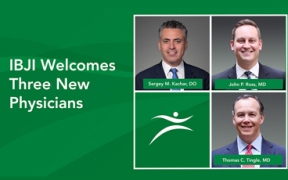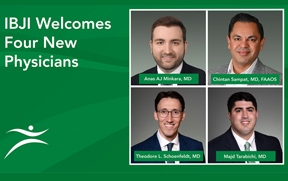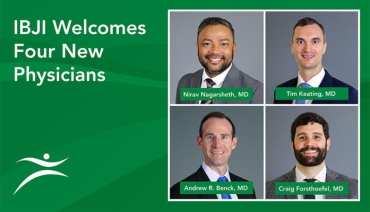Bone grafting is a common orthopedic procedure to promote bone healing, by providing a foundation for the patient’s body to grow new bone, and for structural support to the skeleton, by filling large gaps between bones. Bone grafting is required mainly due to injury and disease, in case of complex fractures, for spinal fusions, regeneration of bone lost to disease or infection (eg, degenerative disc disease, scoliosis) and for bone healing around implants, such as plates, screws, and joint replacements.
Stimulate Healing
The bone graft is used to speed up and stimulate the healing of bone and often bone tissue is crushed into powder, with added chemicals, and placed around a fusion or fracture site to help the surrounding bones to heal quicker.
Provide Support
When new bone grows, it stabilizes and fusion occurs. Although screws and rods are often used for initial stabilization, it is the bone graft that enables healing of bone to repair vertebrae for long term stability. Bone graft can either be structural in place of a disc or bone that was removed to provide structural support or onlay, which signifies a mass of bone fragments that develop over time to remodel the spine and bridge the joint.
Different Forms of Bone Grafts
There are two general types of bone grafts either from real bone that comes from the patient’s own body or a donor and bone graft substitutes, which are entirely man-made.
Real Bone Grafts
Autograft: The Patient’s Bone
An autograft is harvested transplanted bone taken from the patient’s body, such as the ribs, hips, pelvis, or wrist. Autograft has a higher rate of fusion success because it contains the patient’s living bone cells, proteins, and calcified matrix, all of which naturally stimulate healing of the fusion. The osteocytes or living bone cells that survive the transfer to the new location continue to make new bone. Bone may be harvested from either the pelvic bones or from a rib or the spine. A bone graft harvesting procedure presents some drawbacks, like post-operative pain associated with the procedure to harvest the patient’s bone, nerve injury or surgical wound issues.
Allograft: Donor Bone
An allograft uses bone from a deceased donor or a cadaver that is stored in a tissue bank. Bone banks make sure the bone graft is cleaned, sterile and stored properly for use. In 2005, the US Food and Drug Administration set up new regulations about human cell and tissue processing to reduce the risk of tissue contamination and the spread of disease.
When surgery requires more bone graft than your own body can supply, especially in major spinal fusions, allograft is very useful. For spinal surgery, allograft is generally prepared for use by freezing or freeze-drying, which reduces the chances of graft rejection. Allografts are also commonly used in hip, knee, or long bone reconstruction of arms and legs, which lower the risk of infection since no additional surgery is needed. Because allograft is not taken from the patient’s own body, it does not contain any living cells and has fewer chemicals to stimulate growth of new bone, as compared to autograft bone.
With an allograft, the fusion process will not be as quick as bones will not grow as well but a bone-growing protein can be added to the area to make up for the lack of living cells. With allograft, surgery is shorter and there is less post-surgical pain. There is always a small risk of transferring infectious diseases even though it is rigidly tested.
Bone Graft Substitutes
Bone graft substitutes are man-made version of a natural product, whether chemicals or devices to stimulate bone growth and fusion. These bone graft substitutes are a safe alternative to autograft and allograft, to provide a structural support for the patient’s body to produce its own bone in time. Many doctors use electrical current stimulation devices right after the first weeks of surgery to speed up the fusion process. With research, there are artificial bone graft materials that have been developed using sea coral harvested from oceans especially for structural bone replacement. Bone graft substitutes share similar characteristics as the human bone including a porous structure and/ or proteins to stimulate healing. Other new bone graft substitutes include:
Demineralized Bone Matrix (DBM)
Demineralized bone matrix is a type of allograft bone developed from cadaver bones in the bone bank, wherein the mineral content and calcium has been removed. This material is turned into chip, granule, sheet, gel or putty and can be added to regular bone in a graft site for volume and to improve fusion. Demineralization helps to bring to forefront the bone-forming proteins (collagen, growth factors) buried within the bone structure to stimulate healing. DBM is more of a bone graft extender than a replacement.
Autologous growth factor (AGF)
Autologous growth factor (AGF), is a solution, developed in the laboratory from blood platelets that can be used to stimulate bone growth. The mixture developed from the blood clot is generally of use only in combination with some form of structural support, such as autograft or fusion cages.
Ceramic-based Bone Graft Extenders
Ceramic based bone graft products include calcium phosphate, calcium sulfate, and bioactive glass available in porous and mesh forms, which are usually used with other sources of bone. These contain a calcium matrix for fusion, but have no living cells or proteins to stimulate the process. There is no risk of disease transfer with ceramic-based products but it may occasionally cause inflammation.
Bone Morphogenetic Protein (BMP)
There are different types of bone morphogenetic proteins (BMPs) that are essentially chemicals added to bone graft to enhance bone growth in a fusion site. There are trace amounts of these proteins found in the human bone but these can be produced artificially in bulk by means of genetic engineering. BMP is usually considered a viable option in spinal surgeries to promote new bone growth and healing that leads to fusion.
Procedure of Bone Graft
Depending on the kind of orthopedic surgery you are undergoing, the surgeon will decide on the type of bone graft to be used. You’ll be given general anesthesia, with an anesthesiologist monitoring the anesthesia and your recovery.
Your orthopedic surgeon will make an incision in the skin, right above the graft site and shape the donated bone to fit the area. Pins, plates, screws, wires or cables will be used to hold the graft in place. When the graft is secured in place, your surgeon will stitch the incision up and bandage the wound. The bone will be supported by cast or splint while it heals, if necessary.
The Illinois Bone & Joint Institute has more than 90 orthopedic physicians, and 20 locations throughout Chicago. We’re here to help you move better so you can live better.




